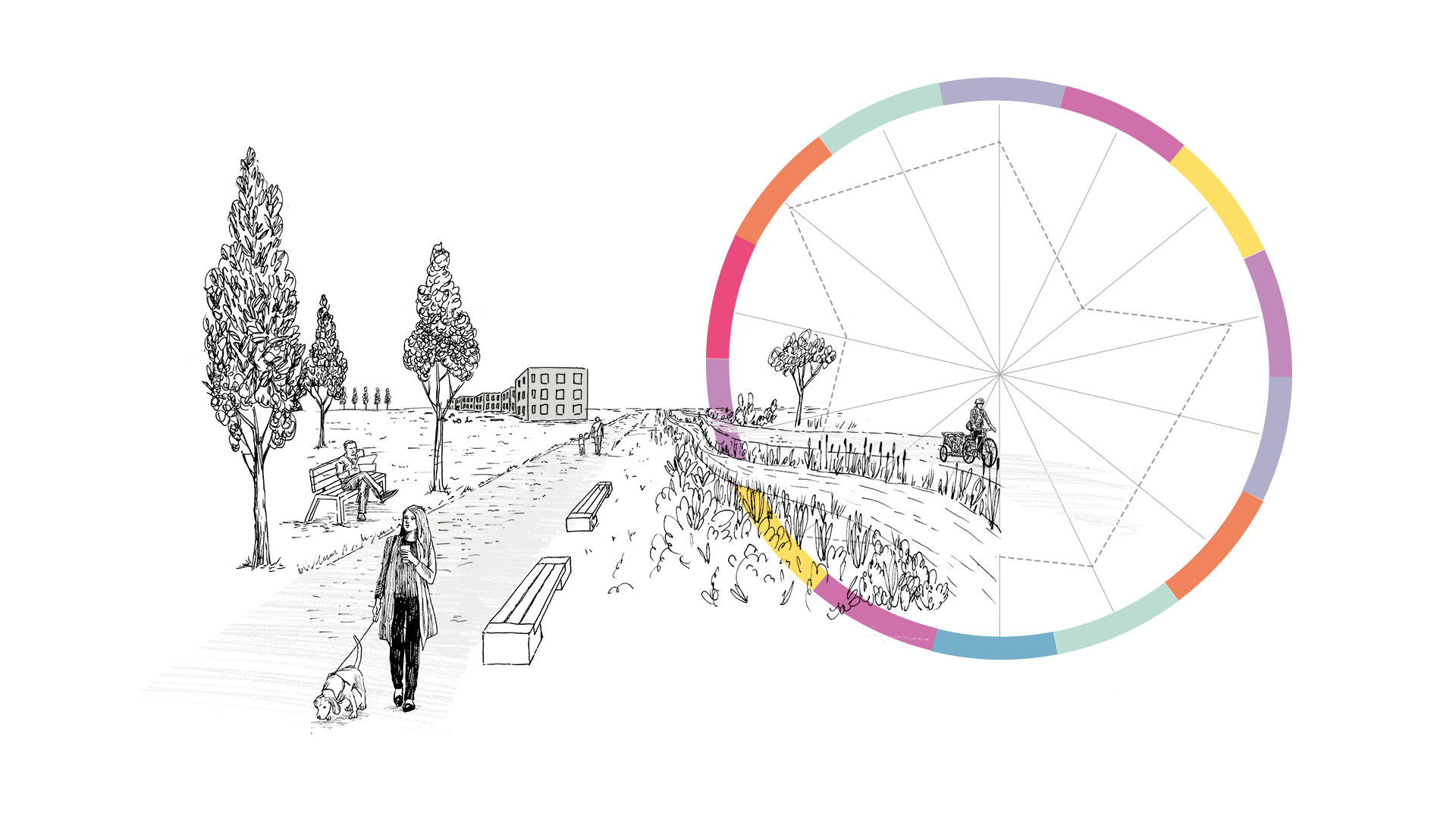When local authorities plan for new ways of services and designs of our places, they require a tool that can help gain the local residents’ perception of their areas. Place Standard provides you with the opportunity of getting to know your places better, from the physical to social environments.
Following a simple framework, the Place Standard can help promote discussions of a place as it incorporates varying themes tied to a place.
How is the tool relevant?
- Establishes place-based approach amongst Local Authority services, Community Planning Partnership, Health & Social Care Partnership
- Gathers qualitative baseline data alongside demographic data/SIMD
- Origins of planning briefs
- Inputs to Strategic Environmental Assessment
- Inputs to Action Planning
- Empowers community
- Engages local politicians
- Engages seldom heard groups
- Provides test feedback on prospective housing sites
How can the tool help resolve current issues for place-based work?
- Strategic development frameworks
- Local development plans
- Local development frameworks
- Main issue report monitoring statements
Real life examples of the Place Standard tool in action
We've collected a series of case studies that showcase how local authorities use the Place Standard for development planning at a strategic scale. These case studies are a recollection of stories from the local authorities’ point-of-view of using the Place Standard tool.
Click on the links to scroll to the selected case study.
- Shetland Islands local development plan and locality plan consultation
- West Dunbartonshire main issues and local plan consultation
- South Lanarkshire main issues consultation
- Argyll and Bute local development plan and locality plan consultation
- Dundee City Council local development plan and main issues consultation
- North Ayrshire local development plan
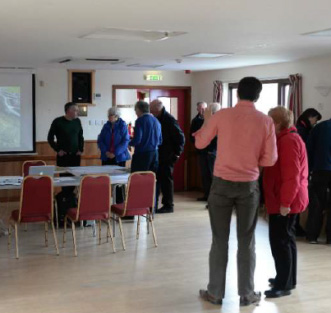
Shetland islands local development plan and locality plan consultation
Shetland Islands Council’s community planning partners came together to use the Place Standard tool to inform their local development and locality plan.
Iain McDiarmaid, Executive manager of Planning reflects on the application of the Place Standard.
Image credit: Shetland Islands Council
Joint work between services who traditionally consult separately saved the council time and money and reduced ‘consultation fatigue’ for the public.
We used the Place Standard tool to facilitate:
- engagement
- corporate dialogue
- community empowerment
- decision-making
- Place-based actions
The Shetland Place Standard consultation took place between 14th June - 10th July 2016. Primarily it was an online exercise. The tool was applied across all island localities. There was also some use of paper version at local venues.
The Place Standard tool was used alongside the National Standards for Community Engagement.
The survey results were analysed and presented in a final report, some of which can be seen on the next page.
Results were shared via reports to councillors, further focus meetings with community groups, published online and via press release.
Outputs provided an evidence base for main issues reporting, making places initiative and masterplanning engagement.
It influenced policy and strategy including:
- Local Outcomes Improvement Plan
- Local Development Plan
- Shetland Local Housing Strategy
- Shetland Transport Strategy
- Shetland Islands Health and Social Care Partnership: Joint Strategic Commissioning Plan
“Mindful of the need not to overburden the population with too many consultation exercises, the breadth of the Place Standard approach is especially valuable due to the range of information it produces. This makes the Place Standard directly relevant to a wide range of services across the public, private, community and voluntary sectors.”
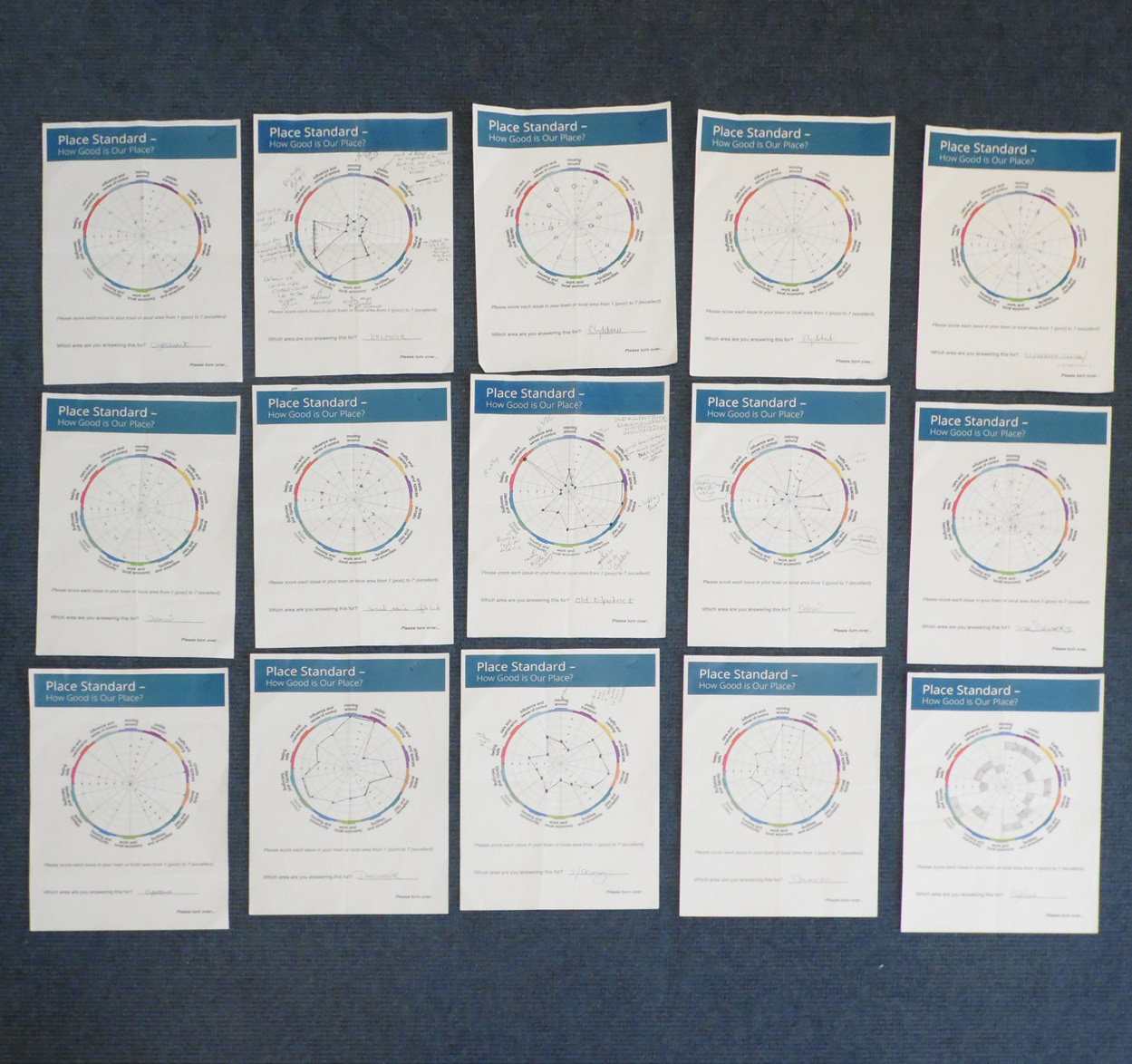
West Dunbartonshire main issues and local plan consultation
West Dunbartonshire aimed to embed their wider alignment approach across the council and community planning partners. Using the Place Standard tool, the council were able to engage with a wide range of ages for their main issues report and local development plans.
Antony McGuinness, Team Leader, forward planning reflects on using the Place Standard.
Image credit: West Dunbartonshire Council
The council has moved to basing everything we do around place.
The Local Outcome Improvement Plan (LOIP), Plan for Place, sets the direction for how we will take forward what we do around place. The ambition is to improve lives and align budgets around a place-based approach to achieve more.
The Your Place, Your Plan brand encapsulates all our plans about place.
As part of the lead practice work with the Scottish Government, we are integrating community planning and spatial planning and building capacity within our communities to plan for their own area.
We chose Place Standard as an easy-to-use tool and conversation starter. This is to help undertake a discussion around place and to collate information on what our communities thought about their place.
We built up our strategic approach in several stages.
Stage 1 - training
The Improvement Service provided Place Standard Facilitator training for our:
- Forward Planning Team
- Performance and Strategy Team
- Communities Team
- Other services within the Council and Community Planning Partners
Stage 2 - events
In the next stage we carried out several consultation events, undertaken during a 12-week consultation period.
The events helped to engage our communities in the Local Outcome Improvement Plan, Local Development Plan 2 and Locality Plans.
Events were jointly managed by our Forward Planning, Performance and Strategy, Communities and Regeneration teams and our community planning partners. At each of the seven events there were a variety of ways for people to fill out the tool. Some school children ran through it in ten minutes.
Completing the Place Standard exercise
The options to complete the Place Standard exercise during the event ranged from:
Simple sheets for people to complete using the Place Standard diagram, asking for three top priorities
Place Standard questions that think about points pinned on the wall for people to complete themselves if they had slightly longer
Full facilitated sessions with groups which were usually undertaken in one hour
Postcode data was also recorded to allow for place-based analysis of responses.
Outputs were converted into a database which was jointly used for the Local Outcome Improvement Plan, Local Development Plan 2 and Locality Plans.
The work has been endorsed by the Local Authority Chief Executive, Strategic Director and Council Leader and Community planning partners. The Community Planning West Dunbartonshire Management board oversee the integration of community and spatial planning.
Informing services, plans and strategies
The intention is to distribute the findings of the consultation events to the various departments within the council. We intend to use the information to inform the delivery of services and the wider formulation of plans and strategies.
It’s informing the Local Outcome Improvement Plan and Locality Plans, as well as LDP 2. We’re intending that Locality Plans will become part of the proposed plan as supplementary guidance.
These may be combined with local place plans to keep a place focus and to help link to resources supporting communities to implement place plans.
Clydebank Waterfront locality plan
This process is already starting with work on a Clydebank Waterfront locality plan, supported by Scottish Government. It will be informed by a pilot project we are undertaking which is part funded by the Scottish Government under their Making Places initiative.
This will include specific actions to improve wellbeing, tackle inequality and disadvantage, focused on a small geographic area around the Forth and Clyde Canal and Clydebank town centre.
Further targeted consultation is planned with community councils and other community groups. Participatory Budgeting work is also intended using the place focus to target resources.
“The use of the Place Standard within the Your Place, Your Plan consultation resulted in substantially more people being engaged in the Main Issues Report, Local Outcome Improvement Plan and Locality Plan and providing comments on those documents. Specifically, over 100 people were engaged in the Main Issues Report with the same number, or more being involved in completing the place standard. This was an early success for the alignment of the plans and teams.”
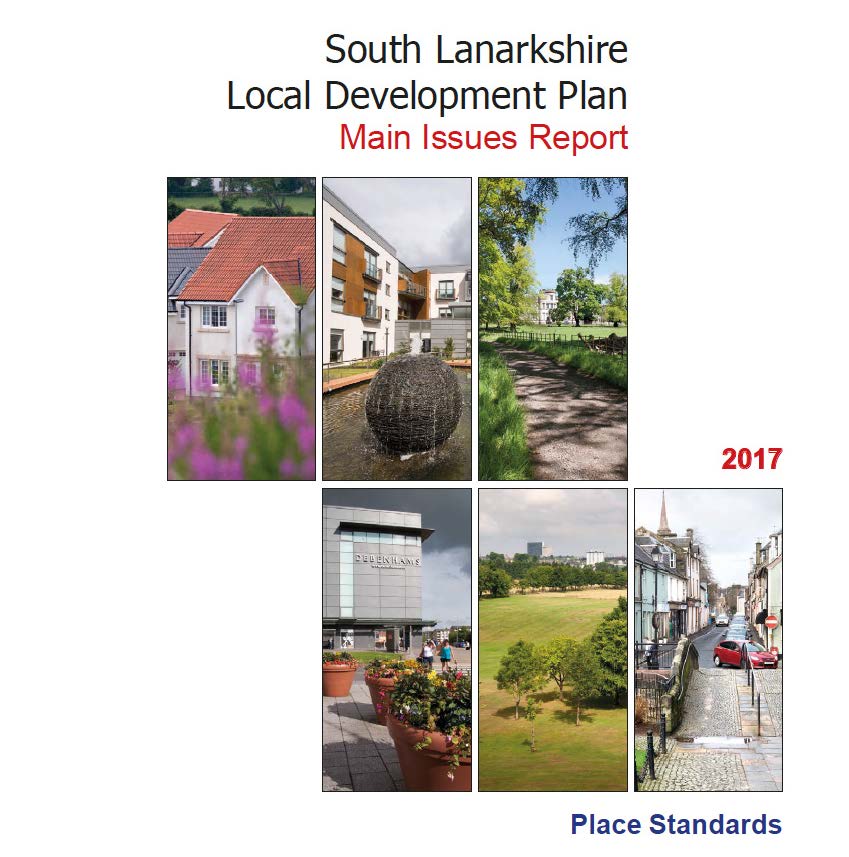
South Lanarkshire main issues consultation
South Lanarkshire required a tool that could help highlight locals' perceptions of their communities in South Lanarkshire.
Gordon Cameron, Planning and Building Standard Services, reflect on using the Place Standard.
Image credit: South Lanarkshire Council
Our work with the Place Standard helped with policy formulation and identification of issues across different areas.
This was suggested by Scottish Government and identified as a potentially useful tool.
The tool was used alongside National Standards for Community Engagement.
Structured discussions were managed with people at stalls in public locations, opinion meters and an online questionnaire.
The tool was used online and with the paper version at meetings. The main focus was work with Community Councils and residents. The tool was applied to town centres, villages and neighbourhoods.
An output report was produced to underpin the Main Issues Report and went on to influence spatial policy.
“Works particularly well at smaller scales - villages/neighbourhoods. Very useful as a way of starting a ‘structured’ dialogue on spatial issues. Noticeable differences between young and older people about how they see their place.”
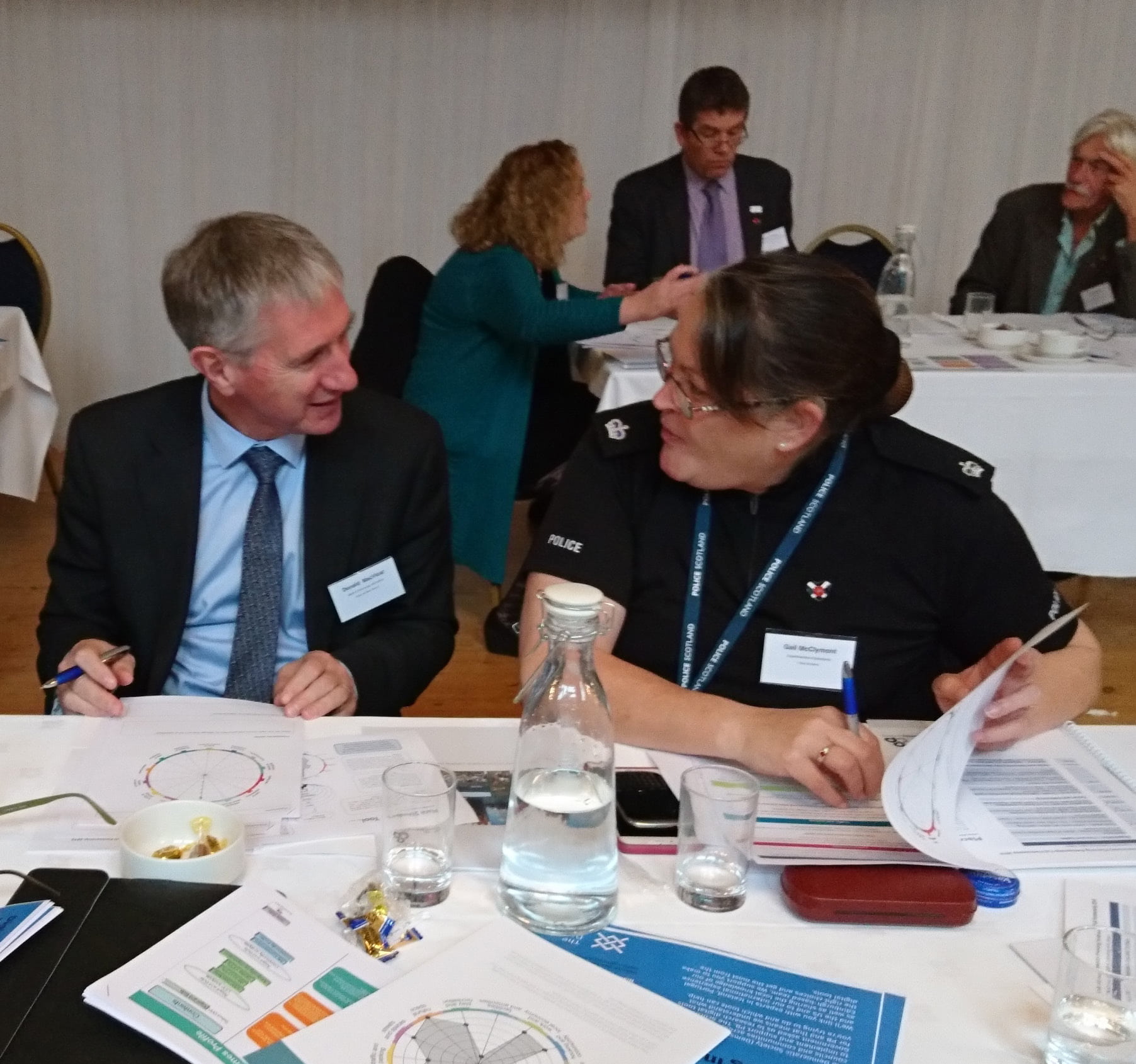
Argyll and Bute local development plan and locality plan consultation
Argyll and Bute Council brought together a wide range of participants for the Place Standard exercise. Used to survey ‘how the community felt about its place’, the survey helped the council to facilitate conversations about place.
In this case study we compare two perspectives on the use of the Place Standard: Community Planning Officer, Samantha Somers, and Spatial Planning Officer, Sybil Johnson.
Image credit: Argyll and Bute Council
Community Planning Officer’s view
The tool was used to survey ‘how a community felt about its place’. The process was intended to facilitate place-based actions as required in national policy.
The Place Standard tool was a cross-service engagement tool that provided evidence to inform locality planning. We built our own version of the tool on the council website for us to collate all the responses centrally.
Delivering assessments
The assessments were mainly completed by individuals. However, we were able to piggy-back onto CPR training, delivered by the Scottish Fire and Rescue Service where there were larger groups present.
Identifying areas for action
The Community Planning Outcome Profile tool from Improvement Service was used in conjunction with the Place Standard tool when analysing the results and identifying priority areas for action.
Mapping results
Data was collated and averaged to create compass diagrams, presented in a report. There was a compass diagram produced for each postcode area, island and administrative area. Scores of three or less were focused on as weaknesses requiring action.
We went back to local Area Community Planning groups to establish actions at a local level and then verified these with the CPP management committee. One-year community action plans have been produced for each area and are public documents which are available freely. The findings from the tool were used to focus actions on community planning locality plans.
Verifying improvement implementations
Higher scores were common for Natural Space and Feeling Safe with lower scores for Public Transport, Moving Around and Work/Local Economy. We intend to use the tool again every two or three years, linked to locality plan timescales to test the effect of implementing improvements.
Serving a wide range of agencies and services
The data gathered is being widely used by partner agencies including:
- Police Scotland
- Highlands and Islands Enterprise
- Scottish Fire and Rescue
- Community Groups
- Community Councils
- Private Sector
- Health and Social Care Partnerships
- NHS Highland
- Third sector
- Social enterprise
Within Argyll and Bute Council it’s being used by a range of services:
- Children and Families
- Housing
- Roads and Transport
- Economic Development
- Planning
- Education
“We targeted anyone and everyone who was a resident of Argyll and Bute to get the fullest response possible - we didn’t focus or specify any particular demographics. However, when doing face-to-face events, we did try and target those who maybe aren’t as likely to complete an online consultation.”
Spatial Planning Officer’s view
The tool was used to facilitate engagement, corporate dialogue, community empowerment, decision-making and Place-Based actions. In particular:
- Used to start the conversation on the Local Development Plan process
- Opportunity for joint working and aligning agendas within the council
- Recommended by the Scottish Government in the SPP
- Simple tool that is easily applied
Our web team adapted the Place Standard tool, running it online and collating the results.
We ran an equalities assessment form alongside the tool. People could comment on a town, village or location. We also used Geographical Information System (GIS) to aggregate the results to different geographies for different purposes.
Local development plan pre-engagement activities
In terms of the LDP pre-engagement we had:
- stakeholder meetings
- community council events
- councillor workshops
- assessment of monitoring data
- Call for Sites - information from developers
- Call for Ideas - more in-depth information asked for by survey that built on the PST from community stakeholders and the public
Data was presented in spreadsheets and analysed via pie charts. The output report was shared on the council portal.
One example from the Monitoring Statement: ‘Participants in Rothesay had the lowest score in respect of work and the local economy whereas Helensburgh and Oban participants scored this higher.’
The Main Issues Report then proposed the retainment of Rothesay as a regeneration area, and Helensburgh and the wider Oban, designated as growth areas due to its potential. This was based on a range of evidence including the Place Standard tool results.
The next stage of use is anticipated in five years in run-up to next LDP.
“It was very useful to run this exercise in conjunction with our colleagues in Economic Development and Community Planning. This ensured we are working off a common data set and meant we could jointly apply more resource to the process thereby improving the response level.”
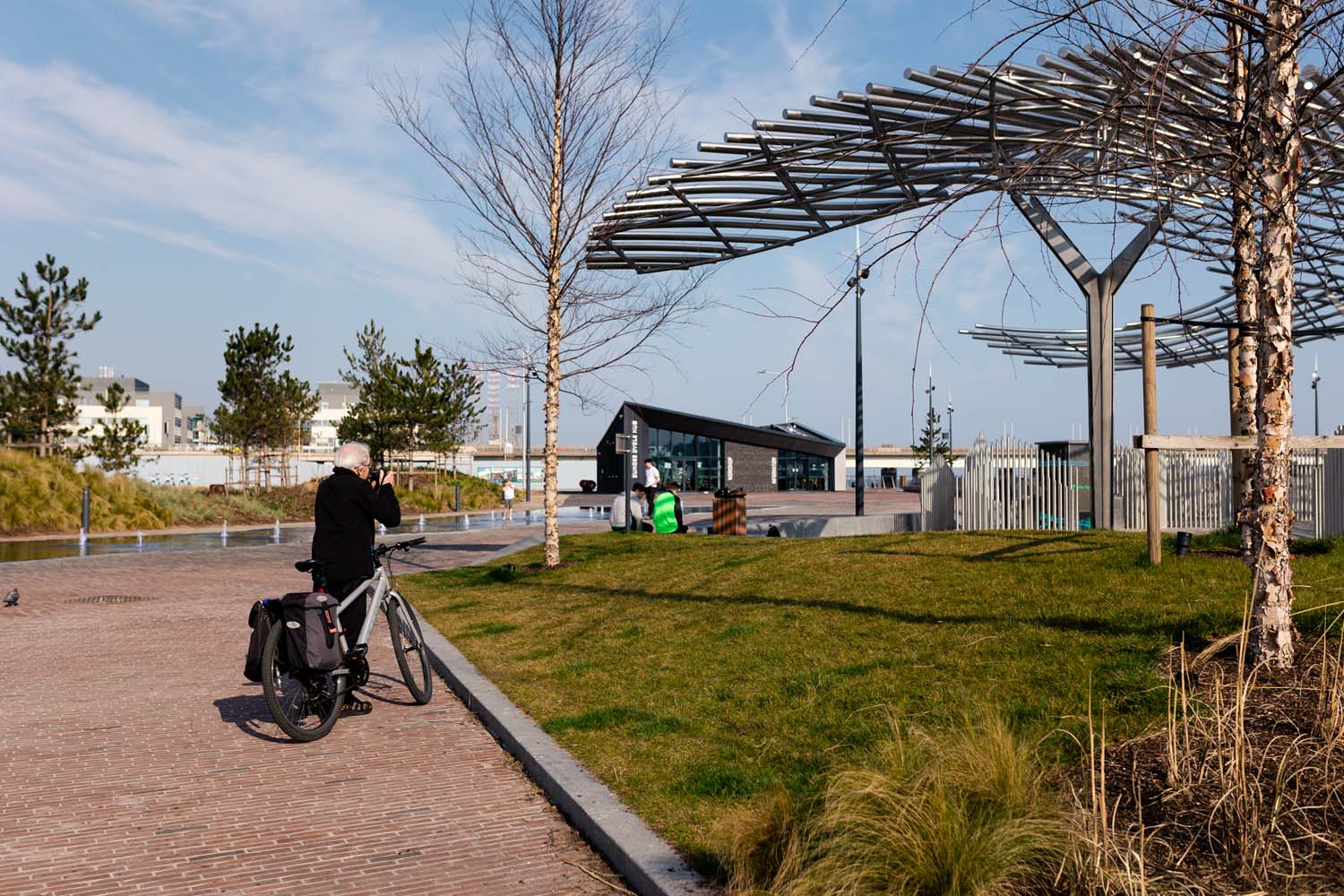
Dundee City Council local development plan and main issues consultation
Dundee City Council required a tool to help reach out to wide range of demographic ranges to help gain a better understanding of people's perception of the local area.
Julie Robertson, Planning Officer, Development Plans & Regeneration of Dundee City Council’s City Development Department reflects on the use of the Place Standard.
Image credit: Miss Lydia Photography
We chose the Place Standard as a simple conversation tool to talk about place as part of a process, to involve seldom heard groups in development planning consultation.
Before the consultation, we highlighted the links between Place Standard themes and various key issues in the main issues report. This allowed us to pull Place Standard results into the appropriate issue response.
The tool was used as part of the wider engagement on the main issues report. There was also:
- online information
- information available in local libraries
- exhibitions
- drop-in sessions
- topic-specific workshops
Incorporating the National Standard for community engagement
We used the National Standards for Community Engagement alongside the tool. This influenced the type of engagement we wanted to achieve and helped us to consider barriers that there had been in the past and how we could overcome some of them.
Completing the Place Standard exercise
Sessions took place at several venues: in a meeting room, a workshop and at a drop-in youth session. We used the paper version of the tool.
People could either complete the compass individually or in a group depending on personal preference or if there was someone who lived in the same area as them or not.
Each person identified the area they lived in and used the tool for their area of the city. We provided each group that was involved a summary of the results and key findings.
We also collected the comments into eight community planning wards, sharing key issues from the Place Standard consultation with Community Officers to feed into local community plans.
The work helped to break down barriers and involve communities not previously involved.
Results were used to feed into the Local Development Plan and Local Community Planning processes. The information gathered was also recorded as part of the representations received in response to the main issues report.
One example of impact was that concerns regarding green space/open space. These were consolidated with a new emphasis in the plan to develop and promote green networks in the city.
We met with Communities Officers to look at how the results could be used as part of the Local Community Plans review. Community Planning colleagues then went on to use the Place Standard in a city-wide consultation event building on the success of use through the MIR.
“We reached a wider spread of communities throughout the city which felt more representative. The quality of the responses was unexpected as was the positive experience of using the tool to engage with communities without confrontation or negativity but to have an opportunity to engage and listen.”
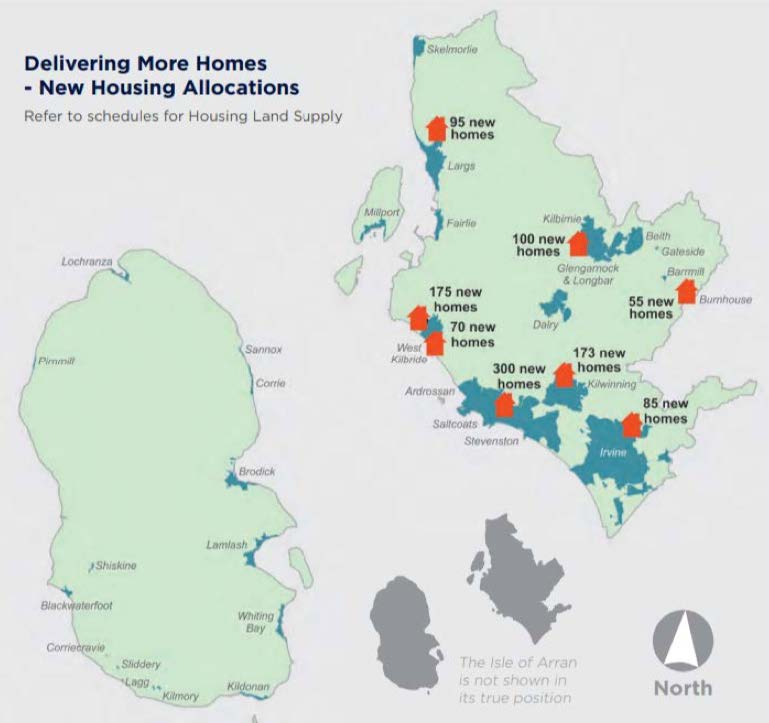
North Ayrshire local development plan
North Ayrshire Council have used Place Standard to empower local communities to influence the selection of new housing sites, informing local policy at an important early decision-making stage.
Neale McIlvanney explains and reflects on the overall process of using the Place Standard tool.
Image credit: North Ayrshire Council
We wished to get feedback from the community on potential new housing allocations in Largs, Fairlie, West Kilbride, Saltcoats, Irvine, Kilwinning, Kilbirnie and Barmill, as proposed in the local development plan (LDP).
It was known that some communities had ‘in-principle’ objections to the sites, so we wanted a structured process to help separate and crystallise in-principle objections from actual material planning issues.
Following the successful application of the Place Standard tool at a higher level to shape strategic priorities for six North Ayrshire localities, we decided to use the tool for this site-specific engagement.
We were also well familiar with the tool from various promotions, training events and public sector publications.
The hope was that feedback gathered through the process could be more meaningfully linked to whether:
- there were genuine grounds for opposition
- it was perception
- there were ways to improve the output of the LDP process through site briefs
Focus groups in Saltcoats town hall
We decided to run a focus group with community representatives from the relevant Community Councils and Locality Planning Partnerships. They were directly approached and invited to participate.
Around 25 people attended the focus group event held in Saltcoats town hall at the end of November 2017.
The exercise was led by the North Ayrshire Council Planning section, with involvement of the Community Planning section and a colleague from the Improvement Service (who acted as session host and facilitator).
All officers were accredited by the Consultation Institute for training. The consultation was in line with a consultation mandate prepared in advance.
Utilising a paper version of the tool
The participants completed a paper version of the tool in groups of between three and ten people. They were supported whilst going through the questions, and they then applied those questions to one or two sites simultaneously.
We supplied participants with:
- A small package of information for each site, showing visuals and maps of the site location
- A one-page summary of the technical assessment
- An indicative site development layout to help them understand the nature of the sites they considered.
A facilitator timed the event to complete the scoring in around one hour. Each table had a group facilitator to ensure that each Place Standard question was covered through rich discussion while achieving feedback from all participants.
Participants were allowed to submit individual scores but more often opted to respond as a consensus.
There was also a Planning Officer at each table, who provided technical information to assist the discussion (planning officers strictly abstained from influencing the discussion).
All feedback was reported, drawn up and passed back to the participants. It also formed part of the evidence of engagement for the LDP examination.
Informing environmental assessments
This targeted consultation formed part of the Strategic Environmental Assessment (SEA) for the new housing sites. It informed site development briefs and spatial planning. The SEA and site selection processes were linked together so that optimal environmental performance was part of the site selection process.
While there was a strong focus on the deliverability of sites, we wanted to ensure that the environmental impact of sites was of equal importance. This meant that the environmental objectives were set to ensure that allocations would achieve quality place making.
Identifying sites for housing
Input of development delivery information and technical consultee responses all fed into a single process for selecting sites, to ensure that only sites that were deliverable and would result in quality places were considered.
In the end, the proposed Fairlie site was rejected because of an alignment of technical concerns and strong community feedback against it.
“This was a very effective tool in drawing out material planning views from community representatives, moving discussion on from basic opposition to proposed new housing sites, to talking about genuine issues.”
Development planning at a strategic scale
The Place Standard is a solution for placemaking. It provides you with place-based approaches that prioritises people and the environment. If you need help, we can provide you with learning resources or help with workshops to get you started on your journey to creating places for Scotland.

